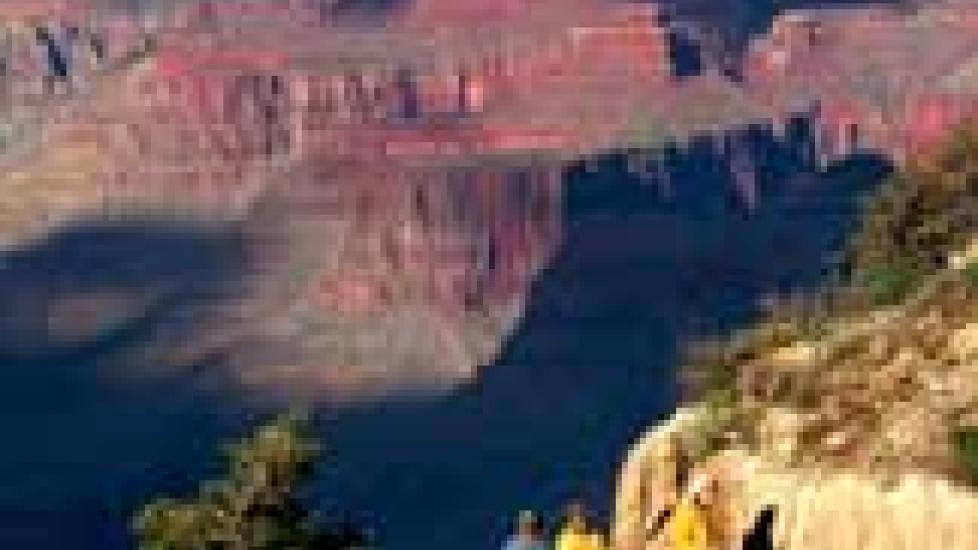Grand Canyon Mules
Recently, I had the great fortune to go on a vacation to the American Southwest. We traveled through Nevada, Utah, and Arizona, exploring national parks, gawking at huge red rock formations, hiking, and drinking lots of root beer to stay cool (and of course keep our blood sugar levels adequately high).
One of our stops was the Grand Canyon, the must-see natural exhibit in this part of the country. Mighty and breath taking and yes, grand. Grand though it was, I was mostly enamored with the mule rides offered down into the canyon. Although I didn’t get to hop on one (darn that pesky husband and his non-horsey self), I glimpsed the long-ears in their stable at the South Rim and saw evidence of their passing on the trails, and I began to wonder: How does a mule get this job? Here’s what I found out.
Mule rides go down the Bright Angel Trail, the most popular trail leading down the canyon to the Colorado River, once daily in the summer. Rides during the off-season are also offered. Currently, these rides accommodate only ten riders — in years past they used to take up to 40 people, but due to complaints from hikers and trail erosion, the number of mules traveling the trail each day has been drastically decreased. Because of this, and the extreme popularity of this once-in-a-lifetime experience, visitors are advised to reserve their rides at least six to eight months in advance, and some dates fill up as far as 18 months in advance.
Most of the mules are purchased from a mule farm in Tennessee, and not all are completely broke to saddle and rider when they arrive at the Grand Canyon. The wranglers (also called "mule skinners") at the park are then responsible for refining the training. Some mules are used only as pack animals on the trail and this is how a lot of the training takes place. This is also where animals that are not quite tourist-accommodating make their living.
These mule rides are overnight. At the end of the day everyone stays at the Phantom Ranch — the only lodging at the bottom of the canyon. The next morning everyone packs back up and out they ride, all 3,000 feet back to the top.
We only hiked a portion of the Bright Angel Trail and let me tell you — it was a workout. There are signs everywhere advising people, "Down is optional, up is MANDATORY." These mules have got to be in peak condition to travel down that trail multiple times a week (there are enough mules so that the same pack doesn’t go down every other day). An equine chiropractor visits regularly to help relieve the kinks and knots in these hard working animals, and regular farrier visits ensure their feet are in excellent shape.
Of course, the natural question to ask is: how often do people fall off? Most recently, in May 2009, a rider was injured in a mule train when her mount slipped, causing her to fall off. Although this did require emergency evacuation, it did not result in a fatality, and in fact the wranglers are proud to point out their impeccable tourist death rate: 0%. Looking back, there has only been one mule-related fatality: In 1951, when a wrangler was killed in a riding accident. With over one million tourists being quoted as having ridden down the canyon on mules, this is an impressive statistic.
Of course, the mules themselves deserve most of the credit for keeping this safety statistic so low. I’ve heard a saying that goes something along the lines of, "You can train a horse to jump off a cliff..." leaving the listener to infer that, no, you will never be able to convince a mule that’s a good idea. Yes, they can be stubborn, and yes, believe me, they are sure quick with those hooves, but there’s a certain amount of, I would say, rationality that mules possess that horses often lack. And you need all the rationality you can get on a narrow trail with steep drop-offs plunging a half mile down into a giant canyon.
I’m already planning my second trip back to the Southwest. We missed Mesa Verde and Saguaro National Park, and other places we visited deserve a closer, second look; like the Grand Canyon, from atop a mule.

Dr. Anna O’Brien
Image: oksana.perkins / via Shutterstock
